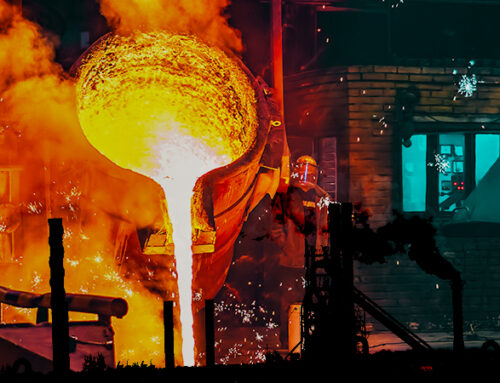A personal project has kept me away from my blog recently, but I wanted to end the year with a wrap-up of some interesting low-carbon technologies that are enjoying a revival.
Scientists have been studying a rare phenomenon in the hope of developing new low carbon means of transport. First discovered in 17th century France, the technique involves the transformation of certain types of squash into vehicles, hitherto powered by external propulsion, although there are plans to develop internal propulsion systems as part of any future commercialisation of the technology.
However in order to get to this stage, two significant limitations of the technology must be overcome: the first is that conversions are only currently viable for a subset of squashes – specifically pumpkins; and the second is an instability in the conversion process by which it spontaneously reverses itself after a number of hours.
Another interesting low-carbon form of transportation is being explored. This technology dates back to the 13th century and involves the use of a flexible platform made of wool that is treated with a special magnetic dye enabling it to levitate and move through the air at speed. Some of these platforms have been very large – one given to King Solomon was capable of carrying 40,000 people – significantly more than can be carried with conventional modes of mass transit.
Unfortunately, the exact formulation of the dye has been lost, and indeed there is some doubt that this dye was indeed the means of propulsion. Prof Lakshminarayanan Mahadevan of Harvard University has studied the aerodynamics of a flexible, rippling sheet moving through a fluid, such as air and concluded that it should be possible to produce one that will stay aloft. In his view, the key to levitating such a structure would be to create uplift by making ripples that push against air close to a horizontal surface, such as a floor. These undulating movements would create a high pressure in the gap between the device and the floor, roughly balancing its weight, and providing directional thrust in much the same manner as rays and skates moving along the ocean floor.
Elsewhere, a medieval form of domestic cladding is being re-visited in the belief it may offer new approaches to home energy efficiency. The use of confectionary, and in particular a bread-like substance made with ginger, as external cladding has a long history in German forest-settings, and is now being investigated to see whether this could be developed as a sustainable and low-cost form of insulation. Early results are promising, although traditionally such homes suffered from cannibalisation by hungry children, so the formula would need to be adjusted in order to render the substance less sapid.
Other ancient construction materials are also enjoying a renaissance, in particular straw and small pieces of wood (sticks). These materials have excellent thermal properties, but challenges remain, not just in terms of fire safety, but also in relation to vulnerability to malignant quadrupeds of the canis lupus species. As these animals are being re-introduced across Europe, the threat they pose to these structures, cannot be ignored.
As the pressure to de-carbonise increases, older, more sustainable approaches to construction and transportation are enjoying renewed interest. If some of these approaches can be shown to be commercially viable, we might avoid climate armageddon and live happily ever after…
.
I would like to wish all of my readers and clients a very merry Christmas and a happy and prosperous New Year.






Here in Wales (at a secret location) we are breeding a new strain of long legged, randy, nervous, flatulent unicorns (fast breeder reactors) to fuel gas turbines.
We had hoped to enter the ‘green’ space race with a cow that jumps over the moo’n, but on return from a test flight she collided with a Squadron of porcine aviators she hadn’t Sus’d out & no matter how much we butter her up she remains cheesed off.
We have also developed ‘Low carbon coal’ (you keep it in the cellar) it is also very green as we daub each lump with a mix of yellow and blue paint, to help meet government targets.
So I dare Gritter Thong-bug to put us up against a wall !!!
You should also harvest the tears of the unicorns as I’ve heard they have a great many applications, particularly as a fertilizer for magic money trees…
Have you considered applying the paint mix to the coal as part of the extraction process. I hear there are some miners that may do this…they tend to work in teams of seven, and are very efficient, other than a tendency to break into random cries of “Heigh Ho!”
Kathryn,
Most interesting. Great to see some new thinking on the problem.
I wonder if it is worth looking at the transport possibilities of flying reindeer. It would seem to me that this could be a much more eco friendly means of transport than conventional aircraft.
At present this is a very under utilised resource, 11 months of the year are under utilised.
Especially good is the ‘all omnipotent’ aspect. Passengers could travel to all airports in one night and just get off/on as required. So travel to any destination in the world would be completed in one night.
I understand that RudolfAir are doing some trials?
Professor Nicholas Clause of Greenland University says they are still working on the problem of having a person following the flight path with a shovel.
Hi Simon,
I completely agree, and explored this topic in a previous post.
Good to know that trials are underway!
Thanks for a laugh to start the year! I’ve been working on attaching wind turbines to the top of plant stalks, certain types of Fabaceae look promising, but I’m still trying to overcome problems with Brobdingnagians.
Happy new year.
Very entertaining… worthy of April 1st.